I have a new obsession that I am
dying to share with the world: using food grade dyes to create fabulous hand dyed yarns. Kettle dyed and hand painted yarns are really fun to work with, depending on your project of course, but they are often prohibitively expensive for those of us whose yarn choices are
coloured by relative (read: comfortable Canadian) poverty. If you dye your own yarn you get twice the creative fun out of your purchases, and a finished product that nobody else has. One day I'll learn to spin, giving myself three times the fun, but not just yet.
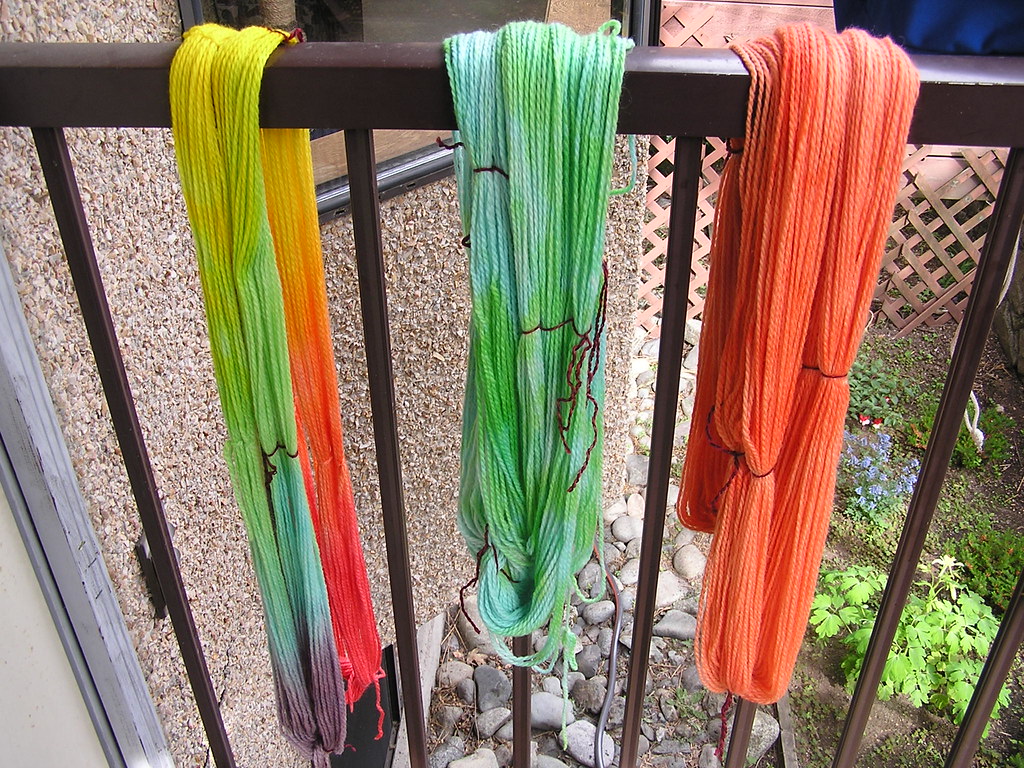 |
| Skeins hanging to dry |
Food dyes (I have used Kool Aid, Wiltons icing dyes, and Club House food colouring) are great because you don't need any gear aside from your usual cooking supplies. Other dyes are really rather toxic and you wouldn't want someone in your household to...
dye after preparing food in a contaminated pot.
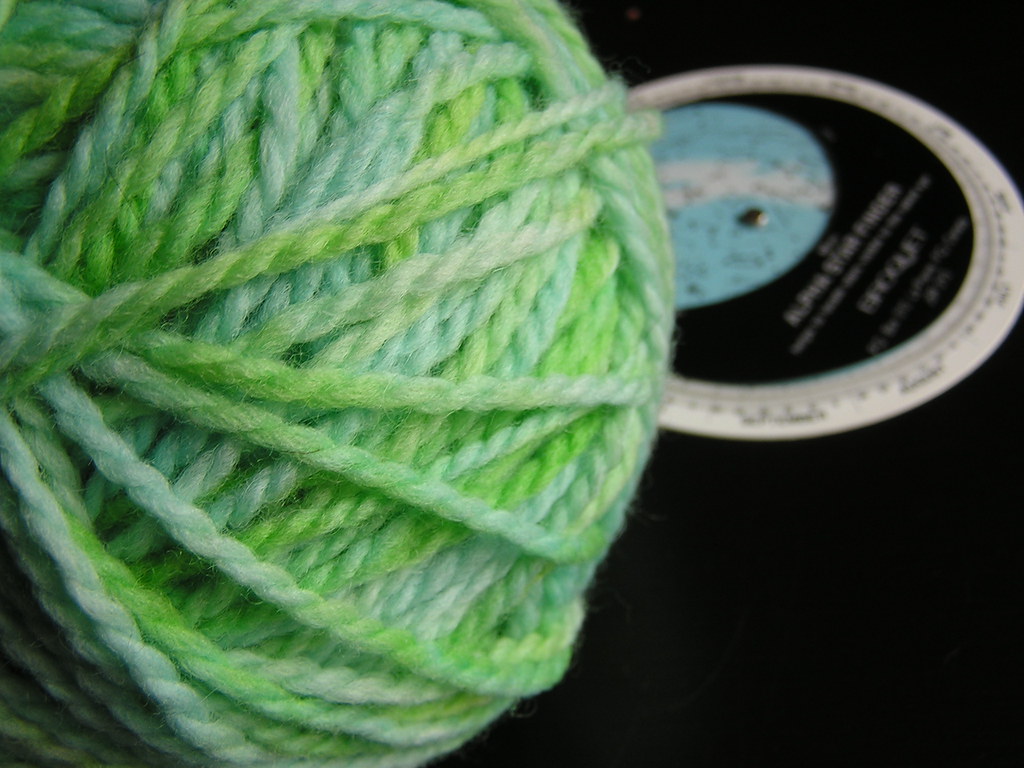 |
| "Earthling" - Lemon Lime and Ice Blue Raspberry Lemonade Kool Aid (slow cooker) |
I won't bother writing out a tutorial for you - there are so many great ones available on the interwebs. I took most of my information from this
Knitty article but picked up tidbits in other places too. I used Cascade
Ecological Wool in ecru and Lion Brand
Fishermen's Wool in oatmeal as base yarns for these first attempts, and I'm hoping to get some Knit Picks
Bare Sock yarn some day to try out. Food dyes only stick to animal fibres - you need other dyes for plant fibres. Fibre blends can produce some pretty neat results as the dye will stick to some components of your base yarn but not others.
 |
| "Calcifer" - Orange and Strawberry Kiwi Kool Aid, overdyed with yellow and red Club House food colouring (stove top, microwave) |
I did learn a few things in my dye experience that deserve passing along:
- I tried 3 heat methods - stovetop in a HUGE pot, smallish slow cooker, and microwave. The big pot was great for even all over colour as the yarn had lots of room to swim. The crockpot did a fabulous multicolour kettle dye. Microwaving is fastest, easiest, has the least cleanup time, and works for handpaints as well as kettle dyes.
- If you don't have gloves, don't worry. Your hands go really awesome colours and it washes off after two or so days.
- Yarn that looks fabulous in the skein may knit up catastrophically. Live and learn I guess.
- Overdye your failed attempts. You have nothing to lose and you may get something really great. Overdying gives your yarn depth of colour and can either tone down or brighten up a skein beautifully.
- If you tie your skein too tightly, dye can't get in under the ties. Sometimes this looks good. Other times it looks very bad.
- Naming your colourways is great. I would go so far as to say it is a necessity. Do it. Photograph them too.
- If you drop your purse with canisters of Wiltons loose in the bottom, they will probably crack and leak.
- If you use Kool Aid, the smell lingers. If you knit that yarn into wool covers for cloth diapers, your baby's dirty bum will smell a bit like fruit. With this experience under your belt you will have a serious aversion to the consumption of Kool Aid and to simulated fruit flavours in general. This is probably a good thing.
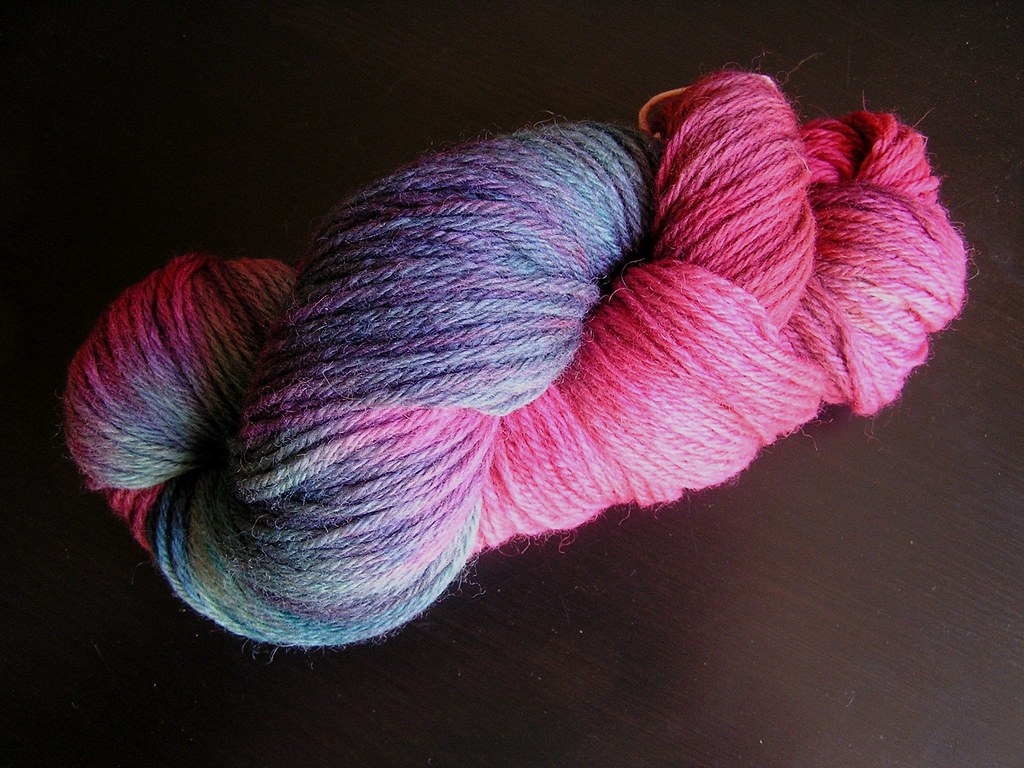 |
| "Lakshmi" - Wiltons Burgundy, Rose, and Delphinium Blue. Stunning in the skein, HIDEOUS knitted up. (microwave) |
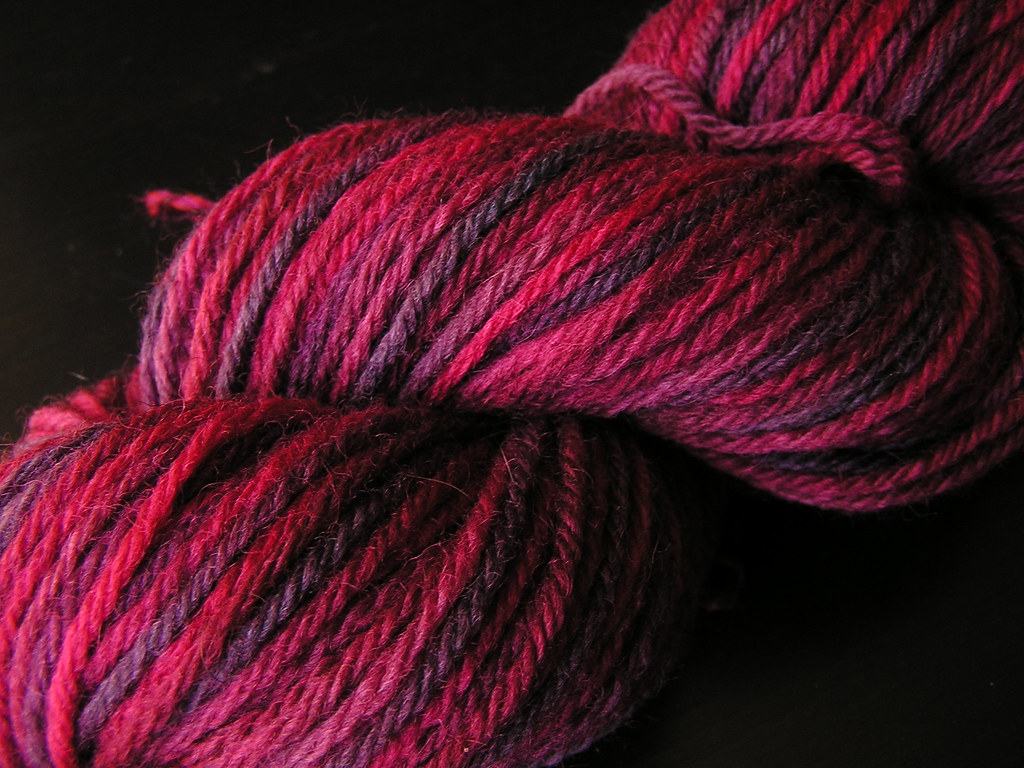 |
| "Lakshmi 2.0" - overdyed with red food colouring. Knits up beautifully. (microwave) |
|
|
 |
| "Lucky Charm" - Cherry, Orange, Lemon Lime, Ice Blue, and Grape Kool Aid; yellow food colouring (microwave) |
|
|
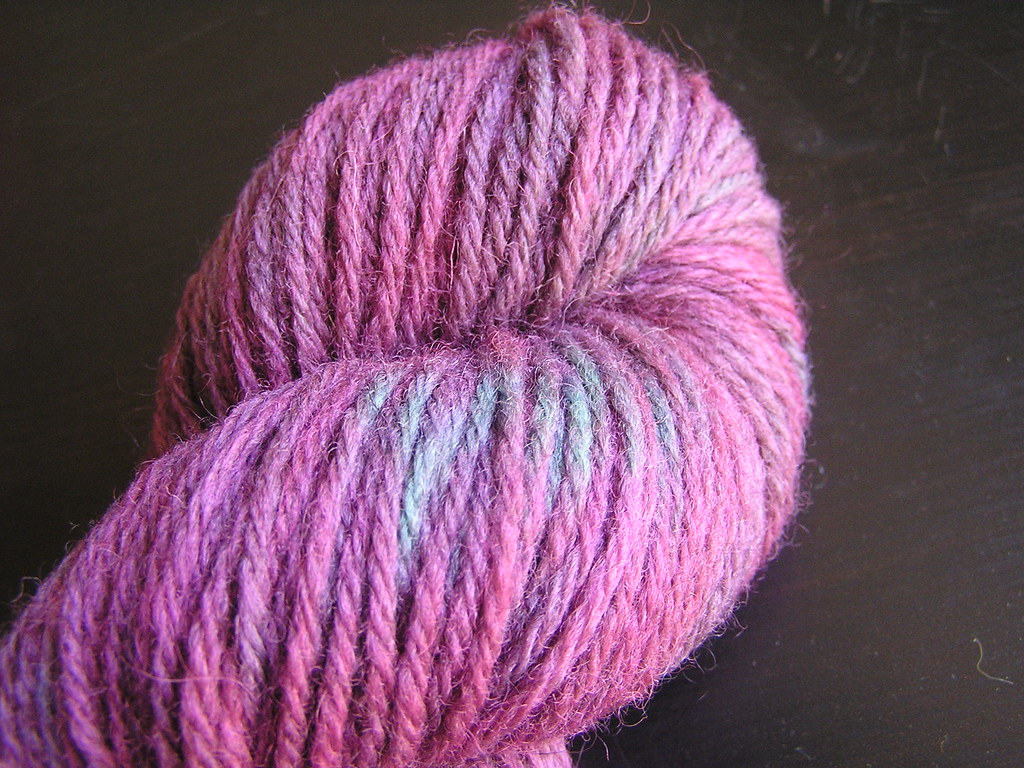 |
| "TwiHard" - Wiltons Burgundy and Delphinium Blue (microwave) | |
|
|
|
|
|
|








No comments:
Post a Comment